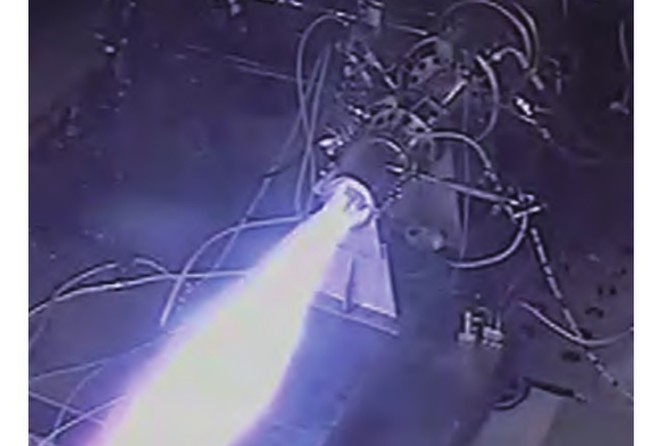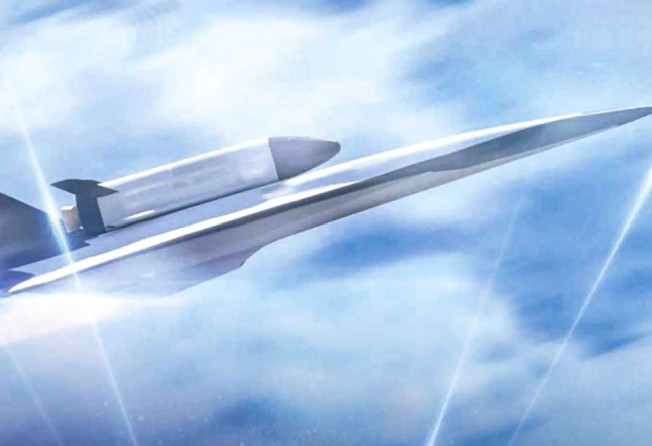
A Chinese team has tested an engine for hypersonic flight – powered by explosions
- Run on cheap hydrocarbon fuel, researchers say it achieved stable operation during a simulated low-altitude flight
- They claim their rotating detonation engine could power a plane or missile at five times the speed of sound or faster

Researchers in southwest China say their air-breathing engine – driven by the explosions of cheap hydrocarbon fuel – achieved stable operation during a simulated test flight at hypersonic speed.
This approach can wreck an engine because the explosions release a huge amount of energy in a sudden, uncontrollable way.
But the team at the China Aerodynamics Research and Development Centre in Mianyang, Sichuan province say their rotating detonation engine could power a plane or missile at five times the speed of sound or faster by producing thousands of explosions per second.
These mini-explosions occur in a narrow gap between two metal cylinders filled with the vapour of ethylene or kerosene. Shock waves caused by the explosions travel through the circular space in a spiral pattern, producing a powerful thrust as they leave the engine.
When the engine’s operation stabilised during the recent test flight “it produced a faintly blue, transparent flame”, said lead author Wang Chao, in a paper published in the peer-reviewed Chinese-language Journal of Experiments in Fluid Mechanics.
Computer modelling in previous studies has shown that a rotating detonation engine can achieve fuel efficiency 50 per cent higher than that of a jet engine, where fuel burns under full control but much more slowly.
Many prototype detonation engines have been built in recent decades – mostly by the military – but for most the operation has been unstable.
The ones that have worked all used hydrogen as fuel. But to store liquid hydrogen, a large fuel tank with a complex cooling facility is needed, meaning it is not suitable for most military purposes.
Hydrocarbon fuel is cheaper and safer to handle, but its vapour is more difficult to produce and ignite. The challenge increases with speed, as the incoming air becomes so hot it can cause an early explosion that could choke the engine. For that reason, it is generally believed that a rotating detonation engine cannot operate at hypersonic velocity.
The team in Sichuan is being led by Le Jialing, lead scientist in China’s hypersonic weapons programme. Their new engine was fired up in a ground experiment that simulated a low-altitude flight at Mach 5.
The initial shock waves produced fast spins and triggered more explosions, some of which moved in the opposite direction to incoming air, according to the paper.
If they had reached the air inlet, the engine would not have been able to “breathe”, so the team added a device between the inlet and detonation chamber to try to stop this from happening.
They also found that the engine needed far more fresh air than for normal combustion to maintain a stable operation – with less air, it backfired and shot out a purple flame from the exhaust that was several metres long.

They tried running it on kerosene and ethylene vapour – it was harder to control the explosions from kerosene – but the team said both hydrocarbons stabilised after some adjustments.
China has developed numerous types of hypersonic weapons that are believed to be able to penetrate most air defence systems. And space authorities say they aim to have a hypersonic plane operational by 2035 that will be able to transport passengers to anywhere on the planet in an hour or two.
But the scramjet engines that will be needed to power such a plane or weapons only work at Mach 4 or higher speeds. That means the early stage of the flight would rely on a rocket or jet engine – making it a sophisticated but less efficient system.
China’s military and government have invested heavily in developing detonation technology with a view to using it with scramjet engines for a seamless hypersonic flight at a lower cost, according to researchers involved in the projects.
The phenomenon of rotating denotation was observed accidentally by former Soviet Union scientist B.V. Voitsekhovskii in 1959, when he was studying the abnormal burning of a liquid rocket engine.
In the following decades, Nasa and the European Space Agency conducted ground experiments to study the nature of spiral shock waves in a confined space.
Chinese military researchers have in recent years made some breakthroughs on the technology, including finding a way to produce an “eternal flame” in an engine to help it sustain the explosions.
In Poland, a small rocket driven by such explosions reached an altitude of 450 metres during a test flight last year.
And in January, Tsinghua University researchers test-fired a larger rocket in China with an upper stage driven by rotating detonation using hydrogen fuel.